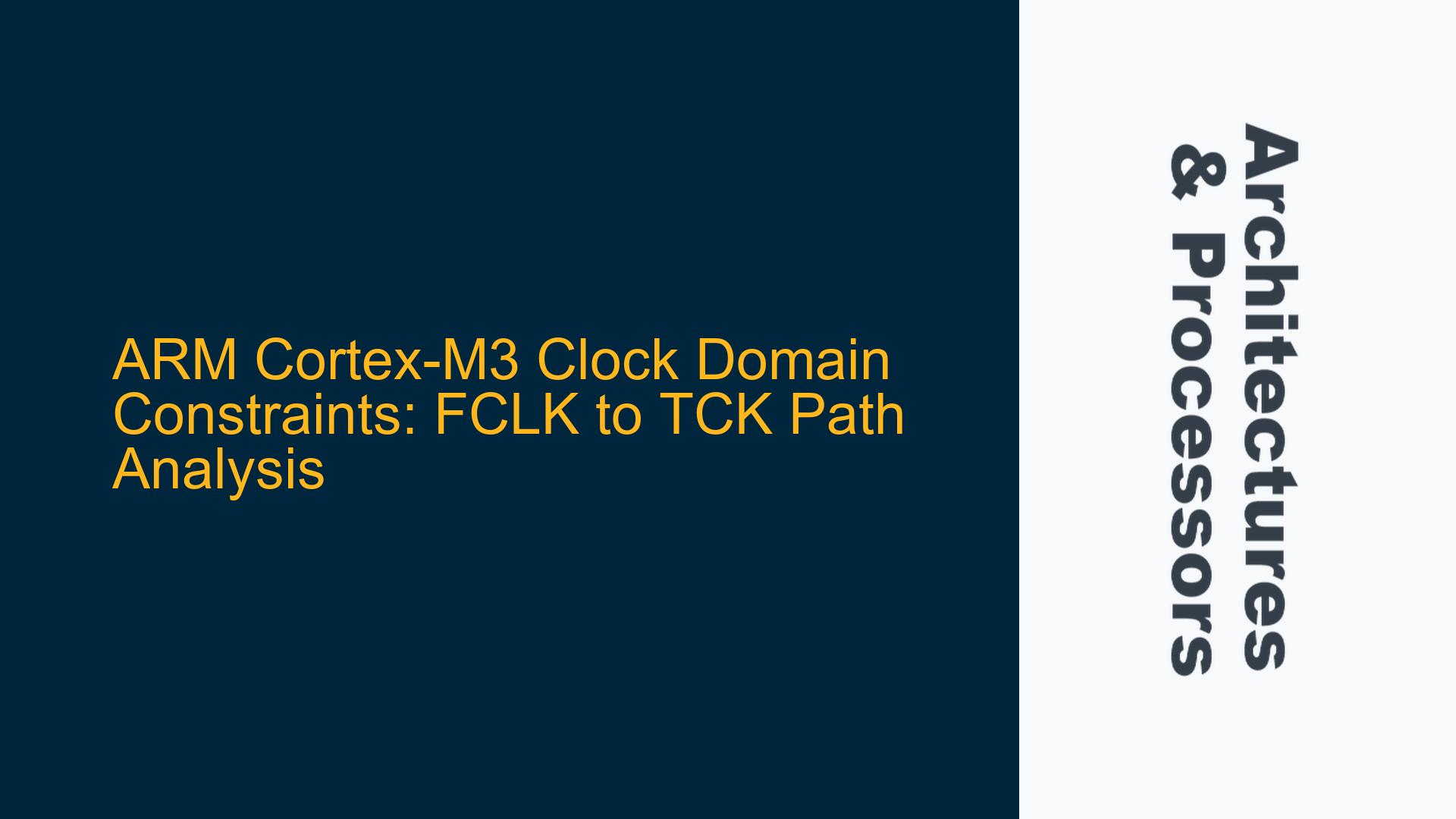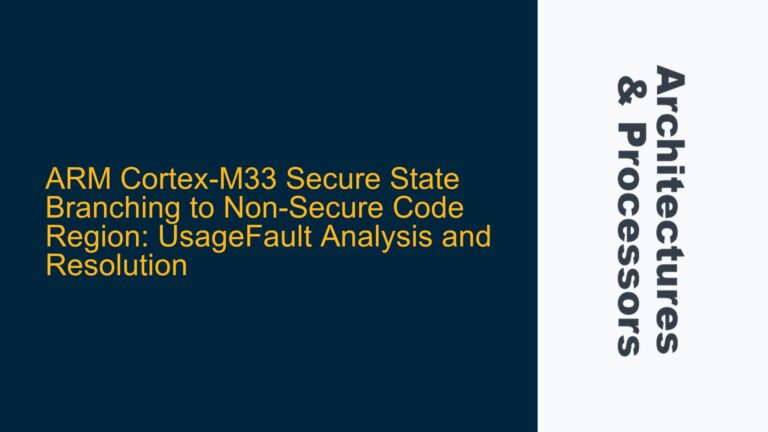Understanding the FCLK to TCK Clock Domain Crossing in Cortex-M3
In the ARM Cortex-M3 processor, clock domain crossings (CDCs) are critical design considerations, especially when dealing with the Free Running Clock (FCLK) and the Test Clock (TCK). FCLK is typically used for the processor’s main operation, while TCK is associated with debug and test functionalities. The interaction between these two clock domains can introduce timing violations if not properly constrained. The primary concern is ensuring that signals traversing from the FCLK domain to the TCK domain meet setup and hold time requirements, which are essential for reliable operation.
The FCLK to TCK path involves signals that may be asynchronous or have different clock frequencies. This asynchronicity can lead to metastability issues, where signals are not stable long enough to be correctly sampled by the receiving clock domain. Metastability can cause unpredictable behavior, including data corruption or system crashes. Therefore, it is crucial to analyze and constrain these paths appropriately in the design phase.
The challenge lies in determining whether to treat the FCLK to TCK path as a false path or to apply maximum delay constraints. A false path is a timing path that does not require timing analysis because the signals are not expected to meet setup and hold times. However, if the path is not a false path, maximum delay constraints must be applied to ensure that the signals meet timing requirements. This decision depends on the specific design and the relationship between FCLK and TCK.
Potential Causes of Timing Violations in FCLK to TCK Paths
One of the primary causes of timing violations in the FCLK to TCK path is the lack of proper synchronization mechanisms. When signals cross clock domains, they must be synchronized to the destination clock domain to avoid metastability. Without proper synchronization, signals may be sampled at incorrect times, leading to timing violations. Synchronization typically involves the use of flip-flops or specialized synchronization circuits that ensure signals are stable before being sampled by the destination clock domain.
Another potential cause is the absence of appropriate timing constraints in the design. Timing constraints inform the synthesis and place-and-route tools about the timing requirements of the design. If the FCLK to TCK path is not properly constrained, the tools may not optimize the path correctly, leading to timing violations. This can occur if the path is mistakenly marked as a false path when it should have maximum delay constraints, or vice versa.
Clock skew between FCLK and TCK can also contribute to timing violations. Clock skew refers to the difference in arrival times of the clock signal at different points in the design. If the skew between FCLK and TCK is too large, it can reduce the available time for signals to meet setup and hold requirements. This is particularly problematic in high-speed designs where the clock period is short, and the margin for error is minimal.
Additionally, the design may suffer from improper clock gating or clock division. If FCLK or TCK is gated or divided incorrectly, it can lead to unexpected clock behavior, such as glitches or uneven clock edges. These issues can exacerbate timing violations in the FCLK to TCK path, making it difficult to achieve reliable operation.
Implementing Clock Domain Constraints and Synchronization Techniques
To address the FCLK to TCK clock domain crossing issue, it is essential to implement proper synchronization techniques and apply appropriate timing constraints. The first step is to determine whether the FCLK to TCK path should be treated as a false path or if maximum delay constraints should be applied. This decision should be based on the design’s requirements and the relationship between FCLK and TCK.
If the FCLK to TCK path is determined to be a false path, it should be explicitly marked as such in the timing constraints file. This informs the synthesis and place-and-route tools that timing analysis is not required for this path. However, if the path is not a false path, maximum delay constraints must be applied to ensure that the signals meet timing requirements. The maximum delay constraint should be calculated based on the clock frequencies of FCLK and TCK, as well as the setup and hold times of the destination flip-flops.
Synchronization is critical for signals crossing from the FCLK domain to the TCK domain. One common approach is to use a two-flip-flop synchronizer. The first flip-flop samples the signal from the FCLK domain, and the second flip-flop samples the output of the first flip-flop using the TCK domain. This double sampling helps to reduce the probability of metastability by allowing the signal to stabilize before being used in the TCK domain.
In addition to synchronization, it is important to minimize clock skew between FCLK and TCK. This can be achieved by carefully designing the clock distribution network and ensuring that the clock signals are routed with balanced delays. Clock tree synthesis tools can be used to optimize the clock network and reduce skew. If the skew between FCLK and TCK is still too large, it may be necessary to adjust the clock frequencies or introduce clock delay elements to balance the arrival times.
Clock gating and division should be implemented with care to avoid introducing glitches or uneven clock edges. Clock gating should be used only when necessary, and the gating logic should be designed to ensure that the clock signal remains stable. Similarly, clock division should be implemented using reliable dividers that produce clean, stable clock edges.
Finally, it is crucial to perform thorough timing analysis and simulation to verify that the FCLK to TCK path meets timing requirements. Static timing analysis (STA) tools can be used to check for setup and hold violations, while simulation can help to identify any potential metastability issues. If timing violations are detected, the design should be iterated to address the issues, either by adjusting the timing constraints, improving synchronization, or optimizing the clock distribution network.
In conclusion, the FCLK to TCK clock domain crossing in the ARM Cortex-M3 processor requires careful consideration to avoid timing violations and ensure reliable operation. By understanding the potential causes of timing violations and implementing appropriate synchronization techniques and timing constraints, designers can effectively manage the FCLK to TCK path and achieve a robust and reliable design.






